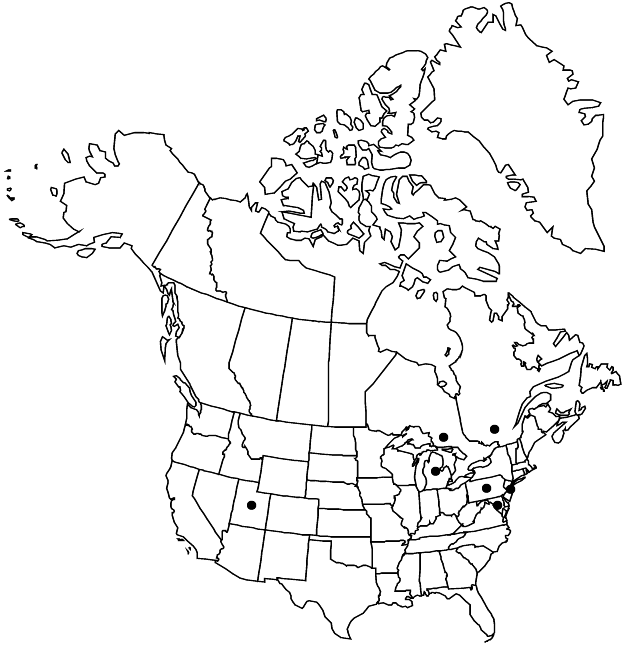Difference between revisions of "Herniaria glabra"
Sp. Pl. 1: 218. 1753.
FNA>Volume Importer |
FNA>Volume Importer |
Revision as of 20:10, 24 September 2019
Plants annual, biennial, or perennial, light to yellowish green, glabrous or puberulent, sometimes with woody caudex. Stems spreading to prostrate, 5–35 cm. Leaves opposite, or distalmost alternate; stipules 0.5–1.5 mm; blade obovate-elliptic to suborbiculate, 3–7(–10) mm, glabrous or sometimes short-ciliate. Inflorescences mostly leaf-opposed, 6–10-flowered. Flowers 1–1.5 (–1.8) mm, usually glabrous or sometimes short-ciliate; calyx not burlike; sepals equal or sometimes unequal, 0.5–0.6 mm, glabrous; stamens 5; staminodes petaloid, 0.5 mm; styles connate in proximal 1/3. Utricles 1–1.3 mm, usually longer than sepals. 2n = 18, 36, 72 (Europe), 54 (Africa).
Phenology: Flowering spring–summer.
Habitat: Roadsides, dry or rocky, sandy places
Elevation: 0-1200 m
Distribution

Ont., Que., Md., Mich., N.J., Pa., Utah, Europe, Asia (Turkey), introduced elsewhere.
Discussion
Historical collections are known also from Maine (1903) and New York (1943).
Herniaria glabra, variable in habit, vestiture, flower size, and fruit length (H. W. Pugsley 1930), has been reported to hybridize naturally with H. hirsuta (M. N. Chaudhri 1968). It makes a dense mat of foliage, being occasionally planted as a ground or grave cover.
Selected References
None.